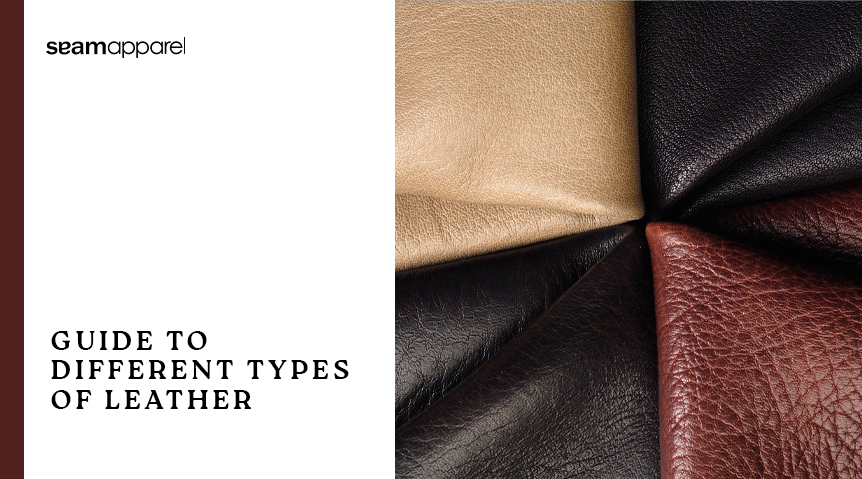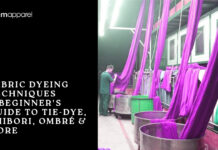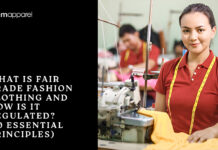One of the first human discoveries in history is leather. Animals were hunted by prehistoric men for their meat, and their skins were utilized to create clothing, footwear, and even tents. It remains regarded as one of the most exquisite and opulent substances that mankind has ever discovered how to use. It comes in a wide variety of styles, colors, and qualities.
We all understand that leather created from sheep, goats, lambs, or deer is referred to as leather skins, and leather made from cows, buffalo, camels, or even horses is referred to as leather hides, even though it has been around for a very long period.
It can be very tricky to distinguish one sort of leather from another. This guide was created to help you get the five different types of leather and to clear up any misunderstandings about the kinds of leather.
What are the different types of leather? Depending on how it is produced and where it is sourced, leather comes in a variety of types. The primary classification, however, is based on the animal skin from which it is made. Full-grain leather, top-grain leather, and genuine leather are the three most crucial types of leather. The hardest leather is full-grain, then top-grain, and finally genuine leather.
What is Leather?
Raw animal hides are transformed into leather in sophisticated processing facilities called tanneries using chemical or natural extracts. Raw skins cannot be used without first treating and changing their fibers since they are prone to degradation. The protein structure of the hide is permanently altered by tanning, which also creates a material that is extremely robust, flexible, and breathable and is suitable for a wide range of uses.
Full-Grain Leather
The outermost layer of the hide is full-grain leather. It is dyed with soluble aniline dyes, which do not cover the hide’s natural surface. Semi-aniline dyes are occasionally used to provide the leather with a thin layer of protection and shield it from stains. Because of its vertical fiber structure, this level of leather is the strongest and most resilient in the entire hide; it will not peel, crack, rip, or pierce.
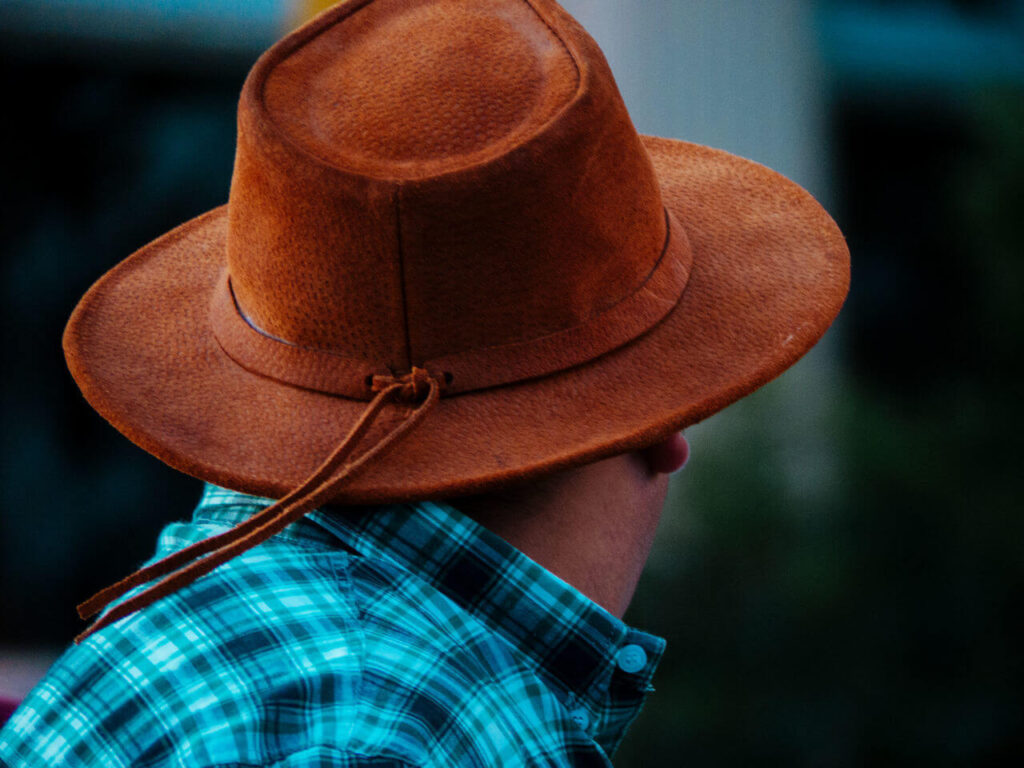

Because of the tight grain pattern, the material is moisture-resistant. Full Grain leather has a distinctive appearance that contributes to its allure; each item depicts an individual animal.
All of the animal’s markings and anomalies are still present, including insect bites, brand marks, wrinkles, and scars from brushing up against a barbed wire fence or cactus. Anyone who has owned full-grain leather is aware that it gets prettier over time and acquires a deep patina.
Top-Grain Leather
Surprisingly, this is the second layer of the hide rather than the top layer. Sanding and buffing have been used to remove the leather’s surface to eliminate the “imperfections”. This provides the leather with a more uniform appearance, but it also means that it will age considerably more quickly and be far less durable than full-grain leather.
Because it is thinner, more malleable, and less expensive than Full Grain leather, Top Grain leather is the most frequently used leather in the creation of high-quality items. ‘Corrected’ leather is a subtype of top-grain leather.
This is a top leather grain type that has undergone a lengthy process of polishing, stamping, dyeing, and sanding to give a uniform appearance with no remaining natural marks.
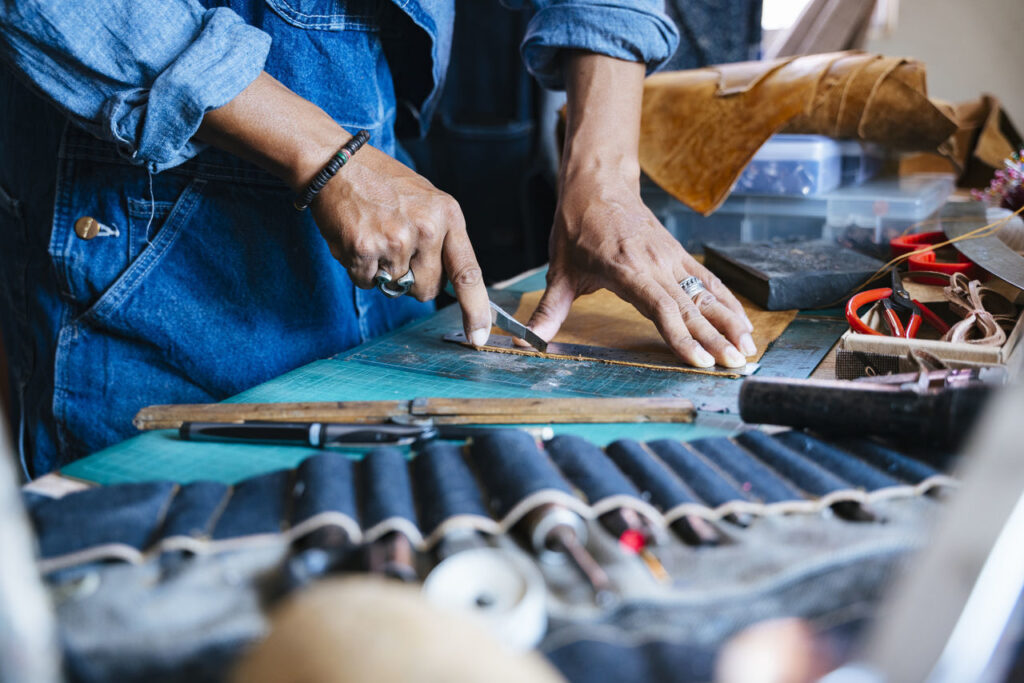

Nubuck Leather
Top Grain Leather that has been brushed and polished to bring out the short protein fibers that give it a velvety surface is known as Nubuck. The lavish surface will change color when you run your palm over it; it is similar to suede but more expensive. It can be white or colored and dyed, and it is thicker and stronger than suede. It looks rougher than suede and might still have some natural marks.
Bonded Leather
Bonded leather is a term used to describe a material made from various leather scraps and containing anywhere from 10% to 90% leather. Usually, it serves as a filler. With latex or polyurethane, the remnants are joined together. You don’t have a quality guarantee like with other grades of leather because each bonded leather material has a significantly different kind of leather. Bonded leather is frequently used by leather goods manufacturers to create couches and other furniture.
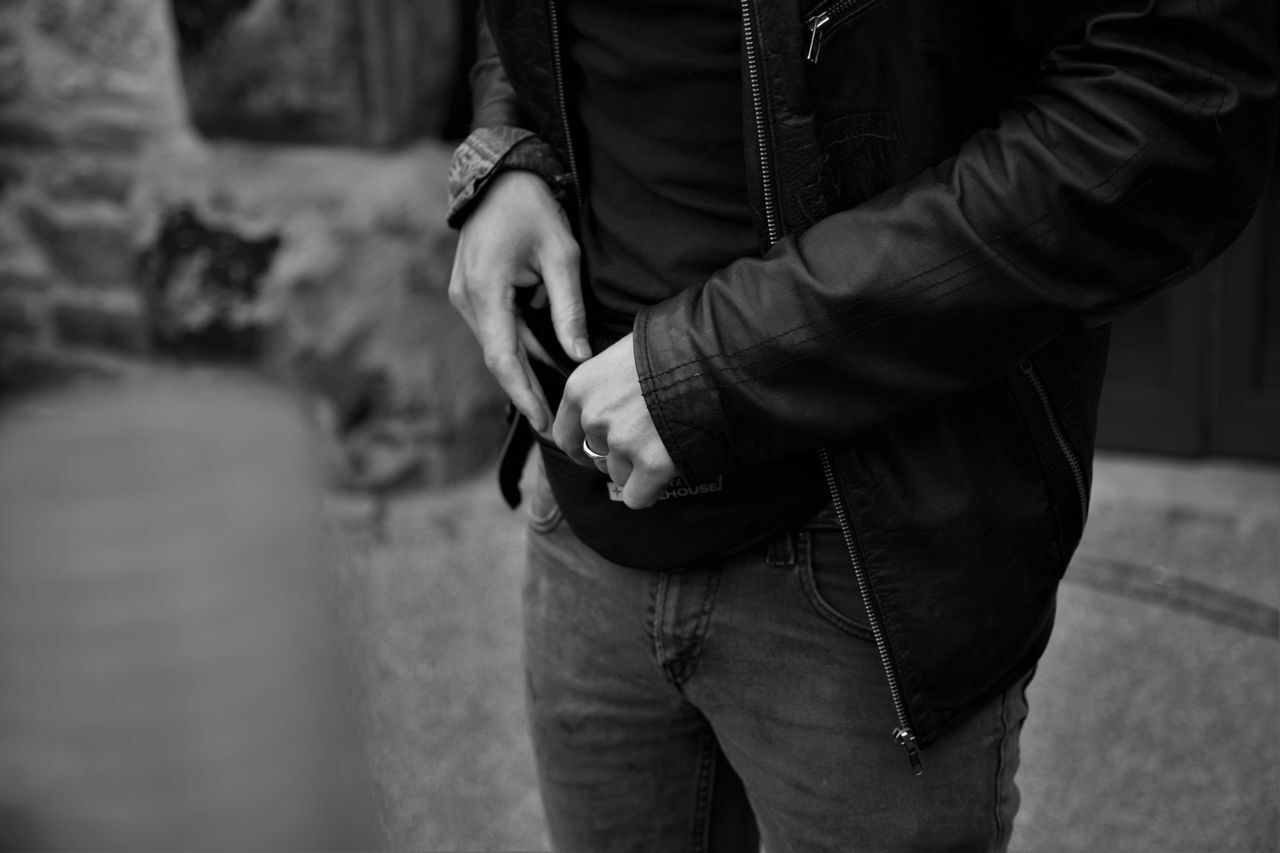

Suede Leather
Suede is a type of leather created from the inner layer of the hide, which was the side that first came into contact with the animal’s skin. The leather is produced by sanding and buffing the surface, making it softer and more flexible than Nubuck but not quite as durable. It is susceptible to stains because of its absorbent surface. Some of our leather coats use this.
What Are The 4 Grades Of Leather?
What are the different grades of leather? Full grain leather, top grain leather, genuine leather, and bonded leather are widely regarded as the four types of leather quality grades, ranked from finest to worst.
- The grain, or top layer of the hide, is what gives top-grain leather its strength and longevity. It is the outer layer of the hide. It might also include some of the corium, a more fibrous under-layer, depending on its thickness.
- The corium, also known as the drop split that remains after the top grain has been separated from the hide is used to make split leather. The drop split can be further divided into a center split and a flesh split in thicker skins.
- The phrase “genuine leather” has numerous meanings. The phrase frequently refers to split leather that has undergone substantial processing. It is not regarded as a product of great quality.
- Bonded leather, also known as reconstituted leather, is made of shredded shreds of leather that is adhered to a fiber mesh using polyurethane or latex. The product’s characteristics are impacted by the mixture’s 10%–90% variation in leather fiber content.
What Type Of Fabric Is Leather?
A natural cloth manufactured from tanned animal skin, leather. Over the centuries, leather—which is thought to have been the first fabric made by human hands—has undergone substantial development.
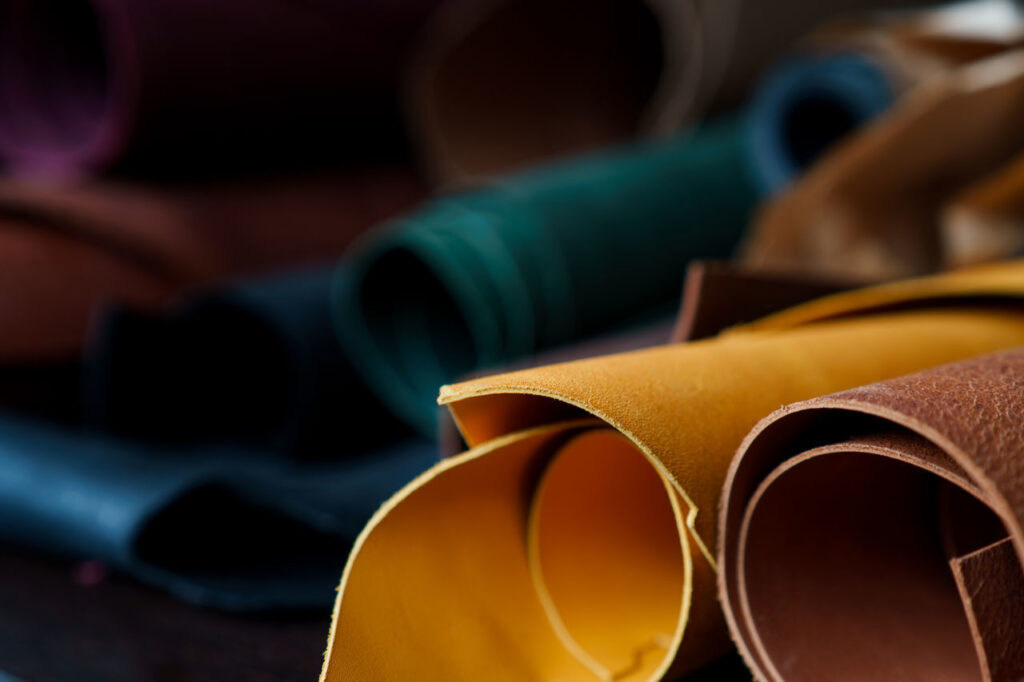

How Many Types Of Leather (Finish) Are There?
The best types of leather listed below span from appearance and weight to feel and finish, which explains why finished products feel and look the way they do.
But a layperson would have a harder time identifying these variations than a leather expert, who could discern a sheepskin from lambskin in a matter of seconds.
This is because many products look too similar or equivalent to be recognized, necessitating the necessity for a leather expert. Although it won’t turn you into an expert, this guide will get you started on the path to better types of leather-related decisions.
Aniline Leather
Aniline leather is commonly referred to as “Natural Nappa,” which is the purest and most natural type of leather. This particular sort of leather is visually identical to the hide from which it was extracted, down to the scars and wrinkles.
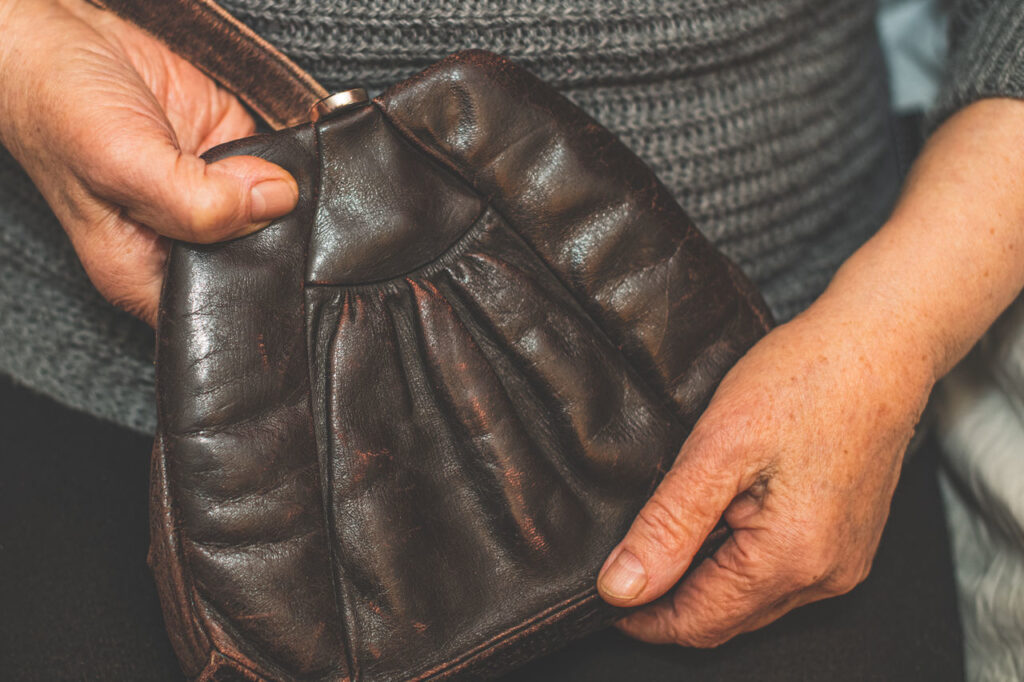

Semi-aniline leather is more robust than aniline leather, which lacks different kinds of leather quality. Another crucial issue is that aniline leather is more expensive, primarily because it is harder to get and requires a higher caliber of selection.
Colored Leather
A full grain and rectified-grain pigmented leather types can be used to categorize this sort of leather. When the grain or textured surface is not altered before the solution is applied to the surface, the leather is said to be full-grain pigmented.
Before the surface solution is applied, the surface is scrubbed to remove blemishes, scars, etc. This is known as corrected grain.
Due to its affordability and durability against stains and scratches, colored leather is widely employed in the automotive sector. Other applications for this leather category include furniture and upholstery.
Split Leather Finished
The middle or lower part of the hide, which is where this kind of leather is found, is sprayed with polymer and embossed to give it a more natural appearance.
It is advisable to utilize this sort of leather in low- to moderately-stress conditions because it is weaker than grain leather. Although most people wouldn’t be able to tell the difference between finished split leather and full-grain or corrected-grain pigmented leather.
Antique Leather
Antique grain leather, also known as two-tone or rub-off leather, has a particular surface texture that resembles the distinctively “worn” or vintage appearance of traditional leather differences. This is accomplished by first coating the surface with a contrasting topcoat, which is then applied completely or in part to expose a paler underlying hue.
What Is The Difference Between Different Types Of Leather?
Depending on how it is produced and where it is acquired, leather comes in a variety of varieties. The primary classification, however, is based on the animal skin from which it is made. The traits of several leather varieties are listed below.
Flexibility
What is the best leather? Superior leather is frequently more durable and slightly stiffer than imitation leather. Your top-grain and full-grain leather, however, will gradually supplant and endure well. The thickness of leather can also be impacted by its weight. Consequently, some premium leather might still be rather soft. Fake leather, on the other hand, is often weaker and loses structure.
The Odor
To discover if you have genuine best leather type quality, use the classic sniffer. It will smell like chemicals and plastic if the leather is fake or of low quality. Simply put, genuine leather will smell like leather. (If the leather is tinted or painted, however, be aware of that fragrance.)
The Grain Pattern
Full-grain leather could have a few minor flaws, as well as an erratic grain pattern. If you look at the entire hide, high-grade leather will also have rough edges. Due to manufacturing, lower-quality leather will appear precisely homogeneous.
FAQs
What Kind Of Leather Is The Most Durable?
The strongest and highest-quality leather is full-grain leather. Depending on how you use the product and how well you take care of it, it can last decades, sometimes even over 100 years—more than five times longer than other types of fabric.
What Type Of Leather Is The Softest?
Since it comes from a young animal, unlike other forms of hide, lambskin is the softest type of leather that is now accessible. It has an extraordinarily smooth, velvet-like feel thanks to its thin, light layering.
What Five Leather Grades Are There?
Based on the amount of processing they have undergone, leather is divided into various grades. Genuine leather, split-grain, bonded leather, full-grain leather, and top-grain leather are the five types of leather fabric.
Final Words
In this short post, we covered a wide range of subjects, such as the many varieties of leather, their characteristics, and how to tell them apart.
This article gives you the most fundamental understanding of leather and its types, even though you will need years of expertise to be fully adept in identifying the appropriate type of leather.
You’ll probably locate a terrific leather that will help create some amazing leather goods depending on the type of leather or your preferences for leather attributes. The next time you go shopping for leather goods or want to dazzle your friends with your leather expertise, I hope this will be useful to you.

